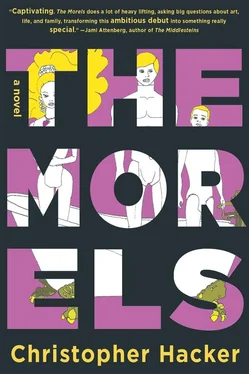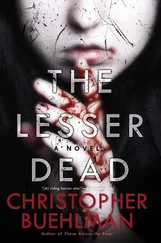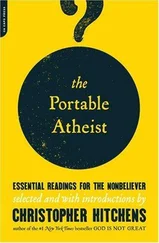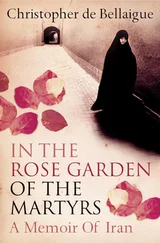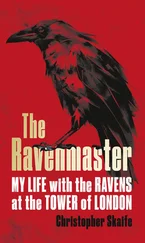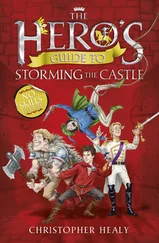As Arthur read this (as it happened, at the same time struggling with a cadenza for the concerto he was to perform), it seemed he had unearthed an essential truth about art, long forgotten — a truth he himself knew but had never been able to articulate before.
It was a notion that came to inform his writing once he found himself engaged in the activity. When he’d finally gotten around to Aristotle’s Poetics , he was struck by this sentence: “Tragedy is an imitation of an event that is serious, complete, and of a certain magnitude, being found in action, not of narrative.”
So, then. The main thing was action , not narrative.
Then what was one to do with a novel, which was narrative in nature? Even scenes that “showed” rather than “told” in a novel were, at core, narrated. How could you overcome what was in essence, your very definition? Was there such a book that could achieve this ideal and still be a book? Actions, however well described are still descriptions of actions — narratives — and not the same as the actions that unfold on a stage, witnessed by a live audience. Books amounted to nothing but fancy stage directions, all potential, no action.
If a book were to overcome such a shortcoming, it would have to be less about what it contained — its story — and more to do with the action on the part of its author — what the author himself was doing or appeared to be doing.
“Like Hemingway,” I suggested. “The hunter who writes about hunting.”
“No,” Arthur says. “Not like Hemingway.” He makes a face. I can see I’ve gotten it totally wrong. He’s disappointed.
Arthur had written several shorter pieces of fiction and with each one felt his craft improving, and although he enjoyed a certain satisfaction in writing them, he was unable to get any closer to this notion of what he felt literary art should be. It was only after he had completed his first novel — in the doldrums between books, ready to give up — that it came to him. In fact, it had been there all along, on his bookshelf — seen so often that it had become invisible.
He had discovered it as a college student, shelving books at the Queens College Library, a job he was terrible at. He’d wheel a full cart into the small rickety service elevator with every intention of doing his job, and yet there he’d be, three hours later, kneeling in the PQs, paging through the unexpurgated 120 Days of Sodom , shelving cart parked in a corner, still full. Yet when, at the end of a shift, he slipped out having only put away half-a-dozen books, nobody seemed to notice. It was a place to daydream literature. It was during one of these daydreams that Arthur discovered PR6068.U757 S27. He was about to shelve it when he noticed the title: The Satanic Verses . Rushdie back then was a prominent news story — the ayatollah only a year prior had levied the holy bounty on the author’s head. Arthur imagined the book — from the furor it had caused and his misunderstanding of the facts — to be some slim document written in Arabic, an unrelenting tirade against Iranians and all that they stood for, whatever that was. His half-brother Benji, whom he was living with at the time and who was outspoken about all matters of cultural debate, declared it only fitting that the book should have sent him into hiding, for it was so poorly written — and when the issue came up in a class Arthur had been auditing the semester prior, he parroted Benji’s condemnation of the book. Yet to Arthur’s surprise there in the library, the book was nothing like what he had expected. First of all, it was in English. The “About the Author” on the last page revealed that Rushdie wasn’t even Iranian — he was from India. The book was big, bursting at the seams. It was at turns lyrical and funny and crass and intellectually challenging.
The burgundy clothbound tome, its library call letters on a strip of white adhesive at the bottom of its spine. Arthur was still on record for owing the eighty-dollar replacement fee. He had kept renewing it, intending on finishing it, but never did. In fact, he hadn’t gotten any farther than he had in that initial enthusiastic burst at the library so many years ago.
He took it off the shelf and reread the opening passage. It begins with a startling image — two men falling out of the sky — suicide bombers who have leaped from a rigged jetliner just before an explosion. Do they get their wish? He couldn’t recall and did not read on to find out now, for it wasn’t the words or their meaning that interested Arthur — it was the action behind them. Here was a book that managed to achieve a certain cathartic ideal. It wasn’t the plot that was the power of this book. Or rather the plot managed to generate the actions that made this book into a powerful creative act. It had caused a series of events that flowed reflexively back to the author. The book, in a sense, was generating story. This he liked; this was interesting literary art.
“So write a book that will get banned. Is that the idea?”
“Not exactly.” Arthur described a man in Florida, a serial murderer, who wrote “stories” in which the protagonist rapes and strangles his victims, the protagonist matching an idealized version of the author and murders tactically similar to the murders he himself would commit, the victims of a similar type he himself might choose. When he was eventually caught, these stories, found on a shelf in his closet, were used as evidence against him in the trial. This, too, Arthur thought, was ideal fiction, powerful fiction, authentic documents of authorial action. It didn’t matter if these stories were poorly crafted — Arthur managed to obtain a copy of them, published by a fringe press under the title Killer Fiction —odd point-of-view shifts, basic grammar and style errors. The craft didn’t matter — the abrupt nonendings, the woodenness of dialogue, the flatness of character. They were essentially snuff fantasies, a kind of morbid pornography. Yet there was an Aristotelian perfection about them. It was an example of narrative catharsis— similia similibus curantur . Blood washing blood. It was why de Sade remained such a potent figure: it wasn’t the writing — for, really, the work, shocking though it is, in the end is just downright tedious — but rather the image of the author imprisoned for engaging in such acts, dreaming up these pages on his only available writing implements: toilet paper and his own blood. The writing becomes synonymous with the author. It’s not what’s written that matters; it’s that the author has written such a thing — the writing of the book as a performative act, a purgative, purifying act. Catharsis.
If Arthur had to define his modus operandi, it would be this: writing as performance .
Arthur disembarked from the plane at Dulles and found the rental counter. His only option that evening was a bright yellow Camaro, a stick shift. He’d never driven a stick before. The attendant made Arthur sign some kind of waiver before giving him a lesson around the parking lot.
Arthur lurched out. The seats were very low. It felt like he was driving lying down. Several cars on the highway honked and flashed their lights at him. He waved tentatively as they passed, thinking that perhaps he looked as ridiculous as he felt and these people were laughing at him, but after a while he realized he hadn’t turned on his lights. He groped around the dashboard, swerving, until he located them and flipped them on. When he arrived at the Wrights’, the window lights — dark upon his approach — went on one by one as he idled, trying to remember how to turn the lights off.
He had brought the gifts for Will — on his way out the door he pulled them down from the closet shelf before putting on his coat. As he hoisted himself out of the car, he dragged the enormous bag from the backseat, loaded down with two video-game consoles, three board games, and a poltergeist forensic kit. He limped with it up the front walk.
Читать дальше
